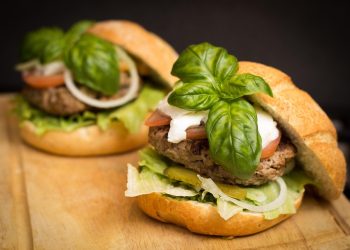Introduction: Intermittent Fasting on a Budget
Intermittent Fasting (IF) has gained popularity as a sustainable eating pattern for weight management, improved health, and increased energy. But many believe that IF requires elaborate and expensive meal plans. The good news is that you can experience the benefits of intermittent fasting without breaking the bank. This article explores how to create cheap and easy intermittent fasting meal plans, making it accessible to everyone.
Understanding Intermittent Fasting Basics
Before diving into meal plans, let’s quickly recap the basics of intermittent fasting.
- Time-Restricted Eating (TRE): This involves eating during a specific window and fasting for the remaining hours. Common methods include the 16/8 (16 hours fasting, 8 hours eating) and the 14/10 (14 hours fasting, 10 hours eating).
- Eat-Stop-Eat: This involves fasting for 24 hours once or twice per week.
- Alternate-Day Fasting: This involves alternating between eating normally and fasting (or eating very few calories) every other day.
For simplicity and ease of implementation, this guide will primarily focus on the 16/8 method, as it’s often the most beginner-friendly and sustainable.
Why Intermittent Fasting Can Be Budget-Friendly
Intermittent fasting can actually save you money. By compressing your eating window, you naturally eat fewer meals and snacks, reducing your overall food consumption and grocery bills. Furthermore, you can focus on simple, whole foods, which are often cheaper than processed options.
Building Your Budget-Friendly Intermittent Fasting Meal Plan
Here’s a step-by-step guide to creating a cheap and easy IF meal plan:
1. Determine Your Eating Window
Choose an 8-hour eating window that fits your lifestyle. Common examples include 12 PM to 8 PM, 10 AM to 6 PM, or 2 PM to 10 PM. Consider your work schedule, family commitments, and social life when making this decision.
2. Focus on Whole, Unprocessed Foods
Base your meals on affordable and nutrient-dense whole foods. This includes:
- Proteins: Eggs, beans, lentils, canned tuna/salmon, chicken thighs (often cheaper than breasts), tofu.
- Carbohydrates: Oats, rice, potatoes, sweet potatoes, whole wheat pasta, quinoa.
- Healthy Fats: Avocado (when in season), nuts and seeds (especially sunflower seeds and pumpkin seeds), olive oil.
- Vegetables: Broccoli, spinach, carrots, onions, cabbage, frozen vegetables (a very cost-effective option).
- Fruits: Apples, bananas, oranges (seasonal fruits are often cheaper).
3. Plan Your Meals Ahead of Time
Meal planning is crucial for staying on track with your IF schedule and budget. Take some time each week to plan your meals and create a grocery list. This prevents impulse purchases and ensures you have all the ingredients you need.
4. Embrace Batch Cooking
Batch cooking involves preparing larger quantities of food at once and storing them for later use. This saves time and money. For example, you can cook a large pot of lentil soup or chili on the weekend and eat it for lunch throughout the week.
5. Don’t Forget Hydration
During your fasting window, it’s essential to stay hydrated. Drink plenty of water, black coffee, unsweetened tea, or herbal infusions. These options are calorie-free and help you feel full and energized.
Sample Cheap & Easy Intermittent Fasting Meal Plans (16/8 Method)
Here are a few sample meal plans to get you started. Remember to adjust portion sizes based on your individual needs and activity level.
Meal Plan 1: Budget-Friendly & Plant-Based
- Eating Window: 12 PM – 8 PM
- 12:00 PM: Large bowl of oatmeal with berries and a handful of nuts.
- 4:00 PM: Lentil soup with whole wheat bread.
- 7:30 PM: Tofu scramble with mixed vegetables (frozen is fine) and brown rice.
Meal Plan 2: Protein-Packed & Simple
- Eating Window: 10 AM – 6 PM
- 10:00 AM: Eggs (scrambled, boiled, or fried) with whole wheat toast and avocado.
- 2:00 PM: Canned tuna salad (mixed with Greek yogurt or avocado) on lettuce wraps.
- 5:30 PM: Chicken thigh stir-fry with mixed vegetables and brown rice.
Meal Plan 3: Quick & Easy
- Eating Window: 2 PM – 10 PM
- 2:00 PM: Leftovers from dinner (e.g., chili, stew, or pasta).
- 6:00 PM: Peanut butter and banana sandwich on whole wheat bread with a glass of milk (or a plant-based alternative).
- 9:30 PM: Greek yogurt with fruit and a sprinkle of granola.
Tips for Saving Money on Groceries
Here are some additional tips to maximize your savings:
- Shop in season: Seasonal produce is typically cheaper and tastier.
- Buy in bulk: Purchase grains, beans, and nuts in bulk to save money per serving.
- Use coupons and discounts: Take advantage of supermarket coupons and loyalty programs.
- Compare prices: Compare prices at different stores to find the best deals.
- Reduce food waste: Plan your meals carefully and store leftovers properly to minimize waste.
- Grow your own food: Even a small herb garden or a few tomato plants can save you money and provide fresh, healthy ingredients.
- Check the unit price: Often, larger packages are cheaper per unit (e.g., per ounce or per gram).
- Buy generic brands: Generic or store brands are often just as good as name brands and significantly cheaper.
Adapting Intermittent Fasting to Your Individual Needs
Intermittent fasting is not a one-size-fits-all approach. It’s important to listen to your body and adjust your IF schedule and meal plan based on your individual needs and preferences. Consider the following:
- Activity level: If you are very active, you may need to adjust your calorie intake and macronutrient ratios to ensure you are fueling your body adequately.
- Underlying health conditions: If you have any underlying health conditions, such as diabetes or hypoglycemia, consult with your doctor before starting intermittent fasting.
- Personal preferences: Choose an eating window and meal plan that you enjoy and can sustain long-term.
- Social commitments: Be flexible and adapt your IF schedule to accommodate social events and special occasions.
Potential Challenges and How to Overcome Them
While intermittent fasting can be a beneficial eating pattern, you may encounter some challenges along the way. Here are a few common challenges and how to overcome them:
- Hunger: Stay hydrated and focus on filling, nutrient-dense foods during your eating window.
- Headaches: These are often caused by dehydration. Drink plenty of water.
- Fatigue: Ensure you are getting enough sleep and consuming enough calories during your eating window.
- Social pressure: Be prepared to explain your IF schedule to friends and family and politely decline food offerings during your fasting window.
Conclusion
Intermittent fasting doesn’t have to be expensive or complicated. By focusing on whole, unprocessed foods, planning your meals ahead of time, and embracing batch cooking, you can create cheap and easy IF meal plans that fit your budget and lifestyle. Remember to listen to your body, adjust your schedule as needed, and consult with your doctor if you have any concerns. With a little planning and effort, you can reap the many benefits of intermittent fasting without breaking the bank.
Frequently Asked Questions (FAQs)
Q: Is intermittent fasting safe for everyone?
A: Intermittent fasting is generally safe for most adults. However, it’s not recommended for pregnant or breastfeeding women, individuals with a history of eating disorders, or those with certain medical conditions. Consult with your doctor before starting IF, especially if you have any underlying health conditions.
Q: Can I exercise while intermittent fasting?
A: Yes, you can exercise while intermittent fasting. It’s often recommended to exercise during your eating window or shortly before. Ensure you are fueling your body adequately with nutritious foods to support your workouts.
Q: What can I drink during my fasting window?
A: During your fasting window, you can drink water, black coffee, unsweetened tea, and herbal infusions. Avoid beverages with calories, such as juice, soda, and sweetened coffee or tea.
Q: How long does it take to see results from intermittent fasting?
A: The time it takes to see results from intermittent fasting varies depending on individual factors such as metabolism, activity level, and diet. Some people may notice changes within a few weeks, while others may take longer. Consistency is key.
Q: Can I eat whatever I want during my eating window?
A: While intermittent fasting focuses on when you eat, the quality of your food still matters. It’s important to prioritize whole, unprocessed foods during your eating window to maximize the health benefits of IF. Overeating processed foods during your eating window can negate the potential benefits.
Q: What if I accidentally break my fast?
A: Don’t worry if you accidentally break your fast. Simply resume your fasting schedule as planned the next day. One slip-up won’t derail your progress.
Q: Is it okay to modify my intermittent fasting schedule?
A: Yes, it’s perfectly fine to modify your intermittent fasting schedule to fit your lifestyle. The key is to find a schedule that you can stick with long-term. Flexibility is important for sustainability.
Q: Can I intermittent fast every day?
A: Yes, you can intermittent fast every day, particularly with time-restricted eating methods like 16/8. However, some people prefer to take breaks from IF on certain days. Experiment to see what works best for you.
Q: Where can I find more information about intermittent fasting?
A: There are many reputable resources available online and in libraries. Look for information from doctors, registered dietitians, and scientific studies. Be wary of anecdotal claims and fad diets.












